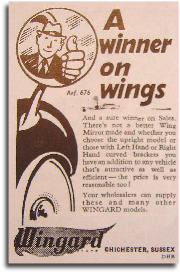
Up until 1920 the only small cars available were the some what crude cycle cars. The Austin Seven was introduced as an alternative, a car in miniature, made from high quality materials that were normally used for larger Austins. In the next ten years approximatly 290,000 'Sevens' were in use and about 20,000 Big Sevens.
The Austin was known the World over with the design being licenced to several countries including Germany who called it the 'Dixi' becoming BMW's first car. In France it was called it the 'Rosengart', and in America as the American Austin, changing its name later to the Bantam. But where ever it appeared and what ever it was called the Austin Seven provided a low cost form of motoring available to all.
 Success was found on the race track, in the form of the Austin Seven 'Ulster' and in off road trials with the 'Grasshopper' sports and other specialised racing models, competing favourably against larger and more expensive machinery.
Success was found on the race track, in the form of the Austin Seven 'Ulster' and in off road trials with the 'Grasshopper' sports and other specialised racing models, competing favourably against larger and more expensive machinery.
By the 1960s the Austins popularity began to wane, as more choice was available to the motorist, but around 6,000 cars have survived to become an essential part of preserved transport history.
The Austin Seven is tough and reliable and continues to give service and enjoyment to enthusiasts, whether touring or simply going for the 'Sunday Drive'.

 Success was found on the race track, in the form of the Austin Seven 'Ulster' and in off road trials with the 'Grasshopper' sports and other specialised racing models, competing favourably against larger and more expensive machinery.
Success was found on the race track, in the form of the Austin Seven 'Ulster' and in off road trials with the 'Grasshopper' sports and other specialised racing models, competing favourably against larger and more expensive machinery.
